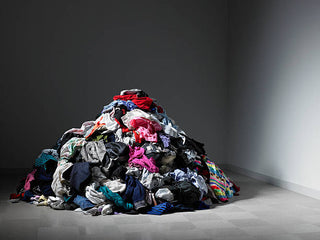Fashion production is a significant contributor to environmental degradation. Here are some alarming facts:
Carbon Emissions:
The fashion industry is responsible for 10% of humanity's carbon emissions. That's a substantial impact on our planet's climate.
Reusing and Recycling:
Only about 15% of used clothes and other textiles are theoretically recycled, and even then, up to half of those recycled materials are shipped abroad to other countries, often ending up in their landfills.
Textile Waste:
Shockingly, 85% of all textiles end up in landfills or incinerated each year. This massive waste stream is detrimental to the environment.
On average, each person in the U.S. discards roughly 103 pounds (47 kilograms) of
textiles annually.
Despite efforts to donate used clothing, a substantial portion still ends up as waste.
However, there are opportunities for improvement, such as repurposing textiles for other products.
That's where we come along!
We weave ourselves into the fabric of time, reshaping and breathing new narratives into objects destined to transcend centuries.

The Dirty Secret of Oversupply!
Between 80 billion and 150 billion garments are produced annually, but 10% to 40% of these remain unsold. This reveals the staggering amount of unsold products potentially ending up in landfills.
Our partnerships with print-on-demand manufactures limit this waste. ♻️

Improper Disposal Methods
While certain brands sell overstock to resale stores or donate to charities, others resort to harmful practices:
Shredding: Destroying garments to prevent resale.
Burning: Releasing dangerous toxins into the atmosphere from dyes and materials.
Dumping in Landfills: Contributing to waste accumulation.

Solutions Needed
To address these issues, the fashion industry needs a fundamental redesign. Embracing circular economy principles can help. This approach involves designing out waste, using safe and renewable materials and repurposing used fabrics to new ones.





